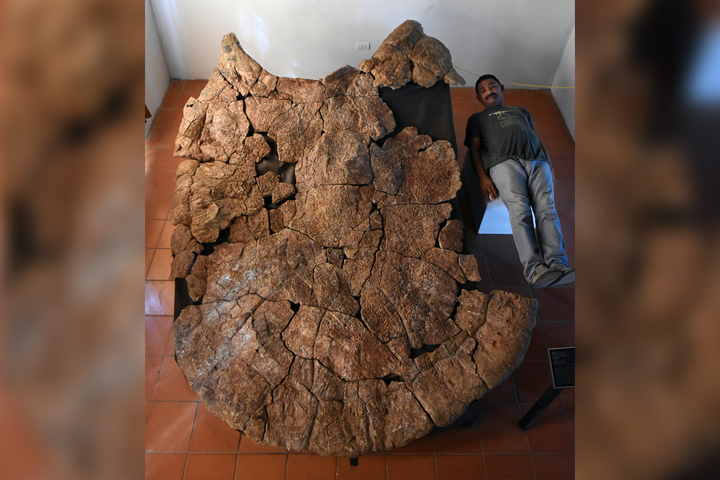
The universe's TRUE colours: NASA combines images from James Webb and Chandra X-ray Observatory to reveal.'In sum, based on the pelvis morphology we suggest that Leviathanochelys could have a pelagic lifestyle.' For instance, some pelagic animals show a modification in their respiratory system intending to maximize their breathing capacity at high depths. 'These muscles could participate in functions related to the respiratory system. 'Furthermore, the new species possess a couple of bony bulges in the anterior side of the pelvis- which we named accessory process- that we speculate that it could serve as an additional ankle point for muscles controlling the abdominal contraction. 'Or in other words, some abdominal muscles of Leviathanochely were proportionally larger than that of Archelon. 'For instance, the pelvis of Leviathanochely is relatively wider than that of Archelon, which suggests that there is more surface to attach the abdominal muscles. 'Because of that, the shape of the pelvic gird has a great impact on how the animal will move or live. Speaking to MailOnline, Dr Lujan said: 'The pelvis is the main attachment point of the bones and muscles of the posterior half part of the body. The turtle has a distinctive protruding bone that is different from other species (illustration) Luján, Albert Sellés, and colleagues described the remains of the new marine turtle specimen, which were excavated between 20 from the Cal Torrades locality in Northeastern Spain. It roamed during the late Cretaceous period, which was between 100.5 and 66 million years ago, and could weigh up to 3.2 tonnes. However, the Leviathanochelys is significantly smaller than the ancient extinct genus Archelon, which is the largest known marine turtle.Īrchelon lived in the seas surrounding the North American continent and grew to a staggering 15.1 feet long (4.6 metres). This prehistoric reptile towers over any other of its extinct or living relatives in Europe, with the largest reaching about 4.9 feet (1.5 metres) in length.


In the study, published in Scientific Reports, the researchers explained the turtle's name was derived from the 'Leviathan, in reference to the Biblical marine beast, in allusion to the body size of the new species', and chelys, which is latinised version of the ancient greek word for female turtle.Īside from being one of the largest marine turtles found anywhere in the world, Leviathanochelys represents the largest to have been discovered in Europe.


 0 kommentar(er)
0 kommentar(er)
